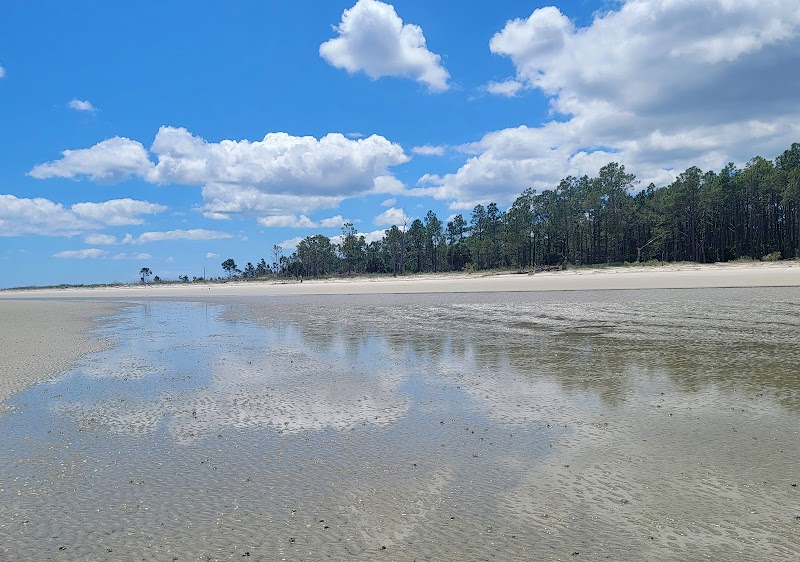
Saint Catherines Island National Wildlife Refuge Adventures
Saint Catherines Island National Wildlife Refuge is a protected area located off the coast of Georgia, renowned for its rich biodiversity and historical significance.
Popular Activities
Unveiling the Secrets of Saint Catherine's Island: A Journey Through Georgia's Untamed Beauty
Embark on a mesmerizing adventure at Saint Catherine's Island National Wildlife Refuge, Georgia—a place where verdant forests meet rugged coastlines, creating an awe-inspiring experience for those with a passionate heart for photography and exploration. This secluded paradise, accessible only by boat, is a canvas painted with natural wonders that awaken every sense, urging both seasoned adventurers and eager novices to capture its untouched beauty.
Imagine setting foot on an island where sun-dappled paths twist through ancient live oaks, their branches forming nature's arches overhead. These wandering trails invite photographers to engage with their surroundings in a dance of light and shadow. Every step is accompanied by the earthy scent of pine mingling with the salty breeze, awakening the photographer's pursuit of capturing ephemeral beauty.
Saint Catherine's Island offers a unique ecosystem where marshlands meet towering sand dunes, each an adventure in its own right. In the golden light of dawn, the salt marshes shimmer, reflecting the sky's hues while herons and egrets gracefully navigate the waters. Here, every click of the camera seizes a moment of serenity—an image that tells the island's timeless story.
Along the island's eastern shore, sandy stretches unfold beside the Atlantic's persistent surf. As the sun rises, this shoreline becomes a theater where sea turtles commence their ancient ritual, an event ripe for documentation by the keen-eyed observer. While capturing these moments, remember the importance of treading lightly, preserving the island's fragile beauty for generations to come.
Inland, the heart of the island beats beneath a velvety canopy. The rhythmic sounds of cicadas accompany explorers through the dense undergrowth, where flashes of vibrant colors lead to unexpected discoveries. Observe how the variegated armadillos forage near the roots—a chance to immortalize the intricate dance of life through the lens.
Photographers will find a wealth of opportunities in observing the interplay of life's cyclical rhythms. The island's diverse wildlife offers a challenge as well as a delight—observing from a respectful distance ensures the natural behavior of its inhabitants. A quality zoom lens can preserve moments such as a bald eagle soaring above the treetops or a family of deer pausing on a forgotten trail.
Taking practical steps can enhance your journey. Timing your visit with the distinct transitions of golden and blue hours brings the most dramatic lighting conditions. Sturdy, waterproof footwear is essential for navigating the varied terrain, from muddy marsh paths to rocky coastal areas. Keeping hydrated and carrying essentials in a comfortable pack ensures that you're prepared, allowing you to focus on the art of capturing your surroundings.
Embrace the practicality of planning your adventure during less traveled seasons to experience the island's quiet majesty. With its limited access, this hidden gem offers a chance to envision the world as it once was, a place where human presence is but a temporary fingerprint on an eternal landscape.
Saint Catherine's Island is a sanctuary of discovery, silently urging you to slow down and absorb its grandeur. It invites you to document its untouched moments while respecting the delicate balance that sustains this vivid wilderness. Such a venture is not merely a journey into nature but into an expanded awareness, each photograph a step deeper into the wild heart of Georgia's coastal refuge.
Plan Your Visit
Everything you need to know to prepare for an unforgettable trip to Saint Catherines Island National Wildlife Refuge.
Entrance Requirements
Access is restricted; special permits are required.
Best Time to Visit
Spring and fall are ideal due to milder temperatures and active wildlife.
Visitor Information
No visitor centers on the island; information can be accessed online or near Savannah.
Getting There
Reachable only by boat; arrange tours or transport in advance.
Weather & Climate
The region experiences hot summers and mild winters, with the highest visibility and pleasant temperatures during spring and fall.
Conservation Efforts
Threats include climate change impacts like sea-level rise and habitat disruption affecting nesting turtles and migratory birds.
Camping in Saint Catherines Island National Wildlife Refuge
Find the perfect spot to stay overnight and immerse yourself in the details.
Top Trails
Trailblazer Tips
Advance arrangements are essential for access to the island.
Visit in spring or fall for the best weather and wildlife activity.
Educational tours provide insight into the island's history and ecology.
Bring binoculars for birdwatching and spotting sea turtles.
